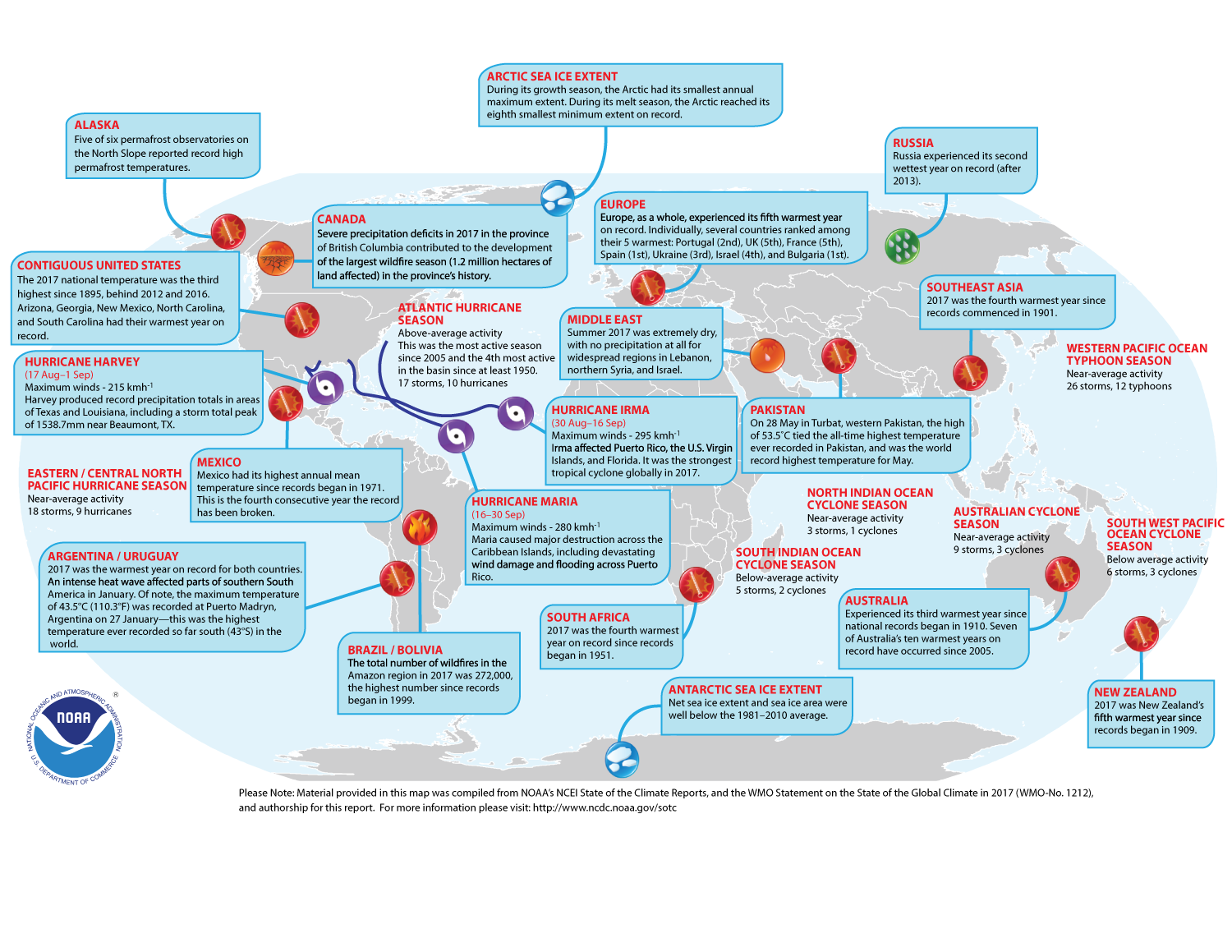2017 State of the Climate Report Released by NOAA
The annual checkup for the planet, led by scientists from NOAA’s National Centers for Environmental Information and published by the Bulletin of the American Meteorological Society, is based on contributions from more than 500 scientists in 65 countries and offers insight on global climate indicators, extreme weather events and other valuable environmental data.

Notable findings from the international report include:
-
Levels of greenhouse gases were the highest on record. Major greenhouse gas concentrations in the atmosphere – including carbon dioxide (CO2), methane and nitrous oxide – reached new record highs. The 2017 average global CO2 concentration was 405 parts per million, the highest measured in the modern 38-year global climate record and records created from ice-core samples dating back as far as 800,000 years.
-
Sea level rise hit a new high – about 3 inches (7.7 cm) higher than the 1993 average. Global sea level is rising at an average rate of 1.2 inches (3.1 cm) per decade.
-
Drought dipped and then rebounded. The global area of drought fell sharply in early 2017 before rising to above-average values later in the year.
-
Arctic maximum sea ice coverage fell to a record low. The 2017 maximum extent (coverage) of Arctic sea ice was the lowest in the 38-year record. The September 2017 sea ice minimum was the eighth lowest on record, 25 percent smaller than the long-term average.
-
The Antarctic also saw record-low sea ice coverage, which remained well below the 1981-2010 average. On March 1, 2017, the sea ice extent fell to 811,000 square miles (2.1 million square kilometers), the lowest observed daily value in the continuous satellite record that began in 1978.
-
Unprecedented multiyear coral reef bleaching continued: A global coral bleaching event spanned from June 2014 through May 2017, resulting in unprecedented impacts on reefs. More than 95 percent of coral in some affected reef areas died.
-
The total number of tropical cyclones were slightly above average overall.There were 85 named tropical cyclones in 2017, slightly above the 1981-2010 average of 82 storms.
 You can read more highlights and the full report at this link from NOAA.
Info from NOAA and AMS
Edited for WeatherNation by Meteorologist Mace Michaels
You can read more highlights and the full report at this link from NOAA.
Info from NOAA and AMS
Edited for WeatherNation by Meteorologist Mace Michaels